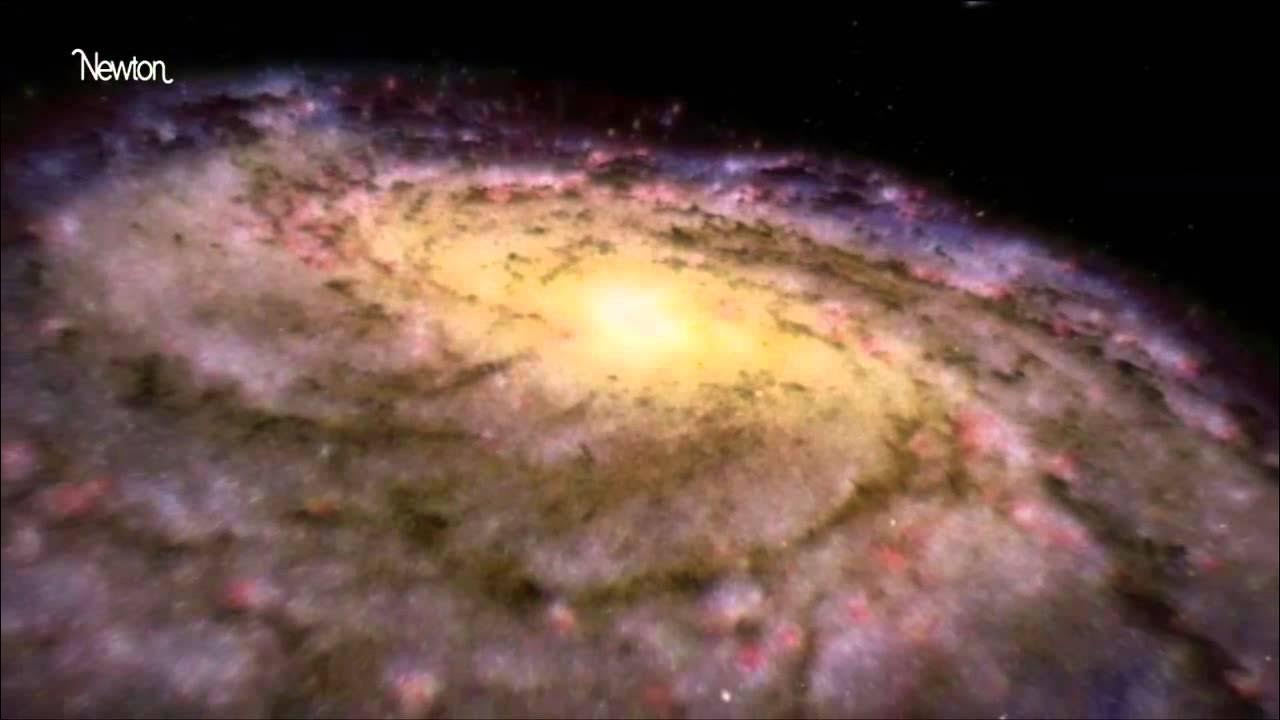How Do You Measure the Size of the Universe?
Summary
TLDRThe video explores the vastness of the universe and how we measure its size. Starting with astronomical units like light years, it highlights the size of the solar system, Milky Way, and nearby galaxies. The focus shifts to the observable universe, which spans 90 billion light years, with an explanation of space's expansion using the raisin bread analogy. The concept of redshift is introduced, showing how distant galaxies' light is stretched by the expanding space. By understanding the expansion history and age of the universe, scientists can calculate its observable size, while the unobservable universe remains a mystery for future exploration.
Takeaways
- 😀 The universe is incredibly vast, and understanding its size can be mind-boggling.
- 😀 Astronomers use light years to measure astronomical distances, with one light year equaling about 9 trillion kilometers.
- 😀 The solar system's diameter is about 8 light hours (9 billion kilometers), and the Milky Way galaxy is about 100,000 light years across.
- 😀 Andromeda, the nearest major galaxy, is 2.5 million light years away from us.
- 😀 The observable universe has a radius of approximately 46 billion light years, making its diameter around 90 billion light years.
- 😀 The size of the observable universe is determined by the age of the universe and the expansion of space itself.
- 😀 Space is expanding, similar to a loaf of raisin bread, where galaxies are like raisins getting farther apart as space expands.
- 😀 Galaxies themselves don’t expand; only the space between them does, which causes the universe to stretch over time.
- 😀 The light from distant galaxies is redshifted due to the expanding space, meaning its wavelength gets stretched as it travels.
- 😀 The relationship between redshift and distance is key for determining the expansion history of the universe and its size.
- 😀 By measuring the redshift and distance of galaxies, scientists can determine the expansion rate and calculate the universe’s size over time.
Q & A
What is the size of the solar system in terms of light years?
-The diameter of the solar system is about 8 light hours, which is approximately 9 billion kilometers.
How far is the Milky Way across in light years?
-The Milky Way is about 100,000 light years across, which is close to 1 quintillion kilometers.
What is the distance to the Andromeda galaxy?
-The Andromeda galaxy is about 2.5 million light years away from the Milky Way.
How large is the observable universe?
-The observable universe has a radius of about 46 billion light years, making its diameter approximately 90 billion light years.
Why isn't the size of the universe just 13.8 billion light years?
-The size of the universe is not 13.8 billion light years because space itself is expanding. The light from distant objects has been carried farther by the expansion of space.
What analogy is used to describe the expansion of space?
-The expansion of space is often compared to a loaf of raisin bread rising in the oven, where the raisins represent galaxy clusters, and as the dough expands, the raisins move further apart.
Do individual galaxies or objects like Earth expand due to the expansion of space?
-No, individual galaxies, Earth, or people do not expand. It is the relatively empty space between galaxy clusters that expands.
What is cosmological redshift, and how does it relate to the expansion of space?
-Cosmological redshift refers to the stretching of light's wavelength due to the expansion of space. As space expands, light from distant galaxies is redshifted, meaning its wavelength increases.
How can astronomers determine the expansion history of the universe?
-Astronomers determine the expansion history of the universe by measuring the redshift of light from distant galaxies and comparing it to their distance. This helps them understand how the universe has expanded over time.
How do astronomers calculate the size of the observable universe?
-Astronomers calculate the size of the observable universe by considering the age of the universe (13.8 billion years), the expansion history, and how far light from distant galaxies has traveled in that time.
Outlines

This section is available to paid users only. Please upgrade to access this part.
Upgrade NowMindmap

This section is available to paid users only. Please upgrade to access this part.
Upgrade NowKeywords

This section is available to paid users only. Please upgrade to access this part.
Upgrade NowHighlights

This section is available to paid users only. Please upgrade to access this part.
Upgrade NowTranscripts

This section is available to paid users only. Please upgrade to access this part.
Upgrade NowBrowse More Related Video
5.0 / 5 (0 votes)





